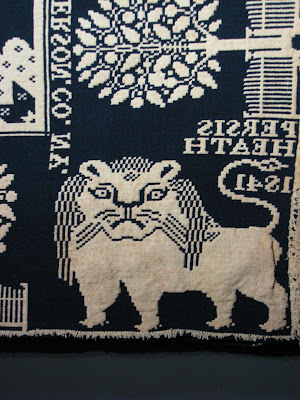


Our guide told us that weaving and dying was “men’s work.” It was the job of the women to spin. The customer would supply the material: wool, cotton, and the weaver would then weave a coverlet incorporating the date, where it was woven and the name of the client. Here are some pictures we were graciously allowed to take sans flash.















This one uses the symbol of the lion which the weaver used as his “signature.”

In this one you can see the writing both forwards and backwards. This is because these were reversible coverlets, so the writing could be read on both right and obverse sides.

The museum has various looms on display. Some are old and some are new as they anticipate giving lessons in the near future. Here are some of the looms and other equipment and a work in progress.





This is the oldest coverlet in the collection, dating from 1771. It is also unique in that it is woven with cotton and linen threads, no wool.

I thought they were all beautiful, but especially loved the colors in this one.

